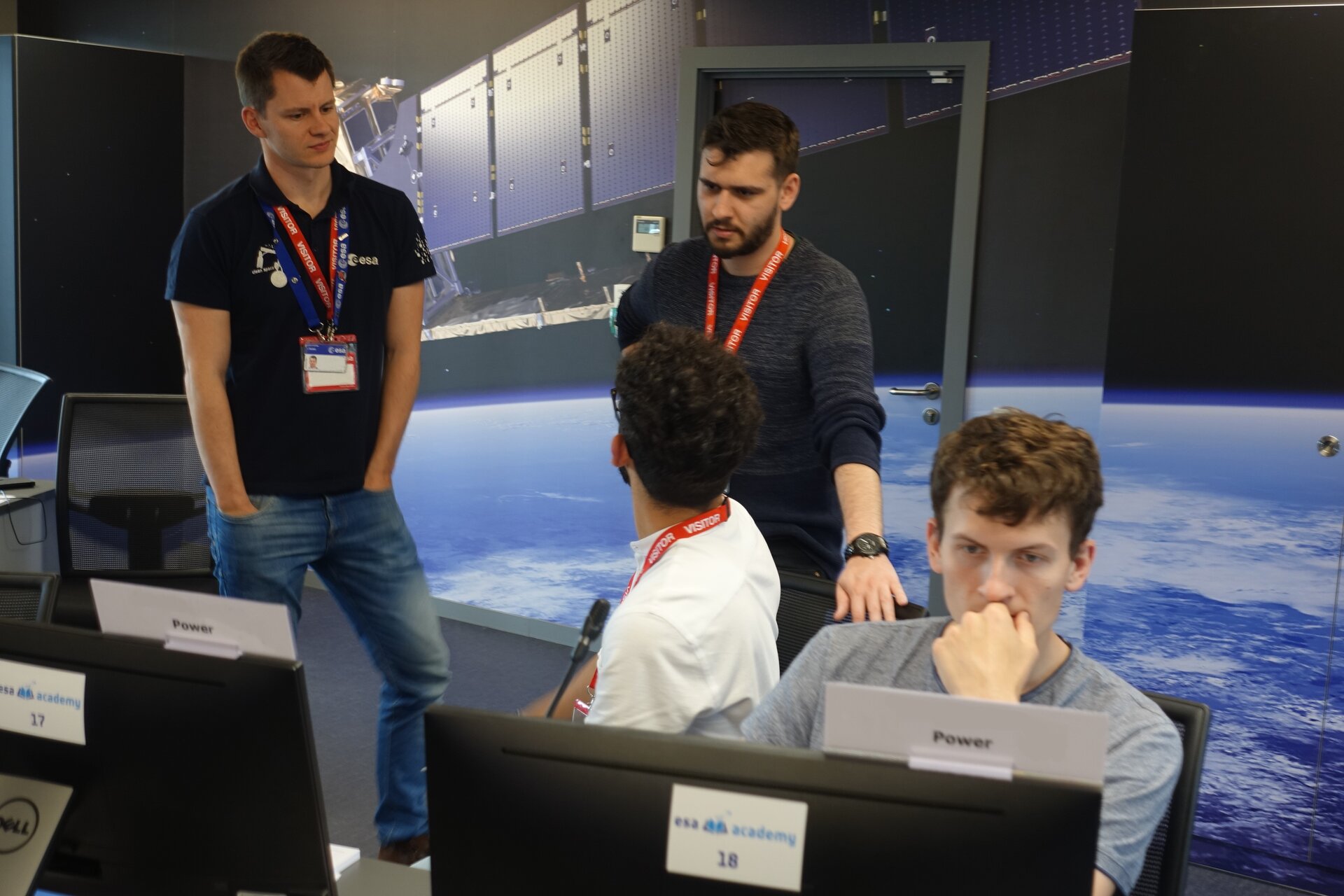Concurrent Engineering allows students to design sample return mission to a comet/asteroid!
30 university students from 11 different ESA Member States have completed the latest of ESA Academy’s highly successful Concurrent Engineering Workshops. Held from 30 April to 3 May 2019, the host site was ESA Academy’s Training and Learning Facility, ESEC-Galaxia, Belgium, where the educational Concurrent Design Facility is placed.
The workshop’s goal was to familiarise the participants with Concurrent Engineering, a systematic approach to integrated product development that emphasises the response to customer expectations. It embodies team values of co-operation, trust and sharing in such a manner that decision making is by consensus, involving all perspectives in parallel, from the beginning of the product life-cycle. Guiding the students were two ESA Concurrent Design Facility System Engineers, as well as a National Trainee as System Engineering Assistant from ESA’s Systems and Concurrent Engineering Section.
The workshop attendees began their adventure by playing a game called EcoDesign. This was both a chance to learn about the environmental impacts of a space mission and lifecycle assessment of a satellite, and an excellent opportunity to meet each other.

The next day, the attendees were introduced to the Concurrent Engineering methodology and learned how to use the Open Concurrent Design Tool (OCDT), which is routinely used to great effect in ESA’s Concurrent Design Facility. Then the challenge was unveiled: using Concurrent Engineering, the students had to design a space mission to return samples from Wilson-Harrington target object.
The mission itself was an ambitious one: a sample return from Wilson-Harrington, an intriguing Solar System object classified as both an asteroid and a comet. The students came up with two equally popular names: Beyond Earth Exploration for Retrieving Samples (BEERS) or Mission for Asteroid Imaging and Analysis (MAIA).
A German student from the Technical University of Berlin said: “Throughout the workshop I've met and connected with many talented individuals, exchanged cultures and worked together on an exciting feasibility study with a sample return from an asteroid. I was impressed with the speed we moved at, our teamwork and the results at the end, gaining a new level of confidence in my abilities and I'm looking forward to applying the skills and methodologies learned in my future space endeavours."
To meet the strict deadline, students were promptly divided into teams to cover the different disciplines:
- Configuration
- Structure
- Mechanisms
- Propulsion
- Mission Analysis
- Attitude and Orbit Control Subsystem (AOCS)
- Power
- Thermal
- Communication & Data Handling
- Optics & Sensors
The following days were then spent with various iterations in order to start and improve the design. Wednesday the first iteration was completed, which was a preliminary design for each discipline. The second iteration on Thursday allowed the students to consolidate the design, determine which aspects of the mission would need extra attention, and finalise the product tree. The third and fourth iterations allowed fine tuning of the design.

"The Concurrent Engineering Workshop is somehow similar to playing in an orchestra,” explained an Italian student from the KTH Royal Institute of Technology. “Students have different personalities, subsystems have different requirements, yet every team has to cooperate with the others to create a complex but harmonic design."
On the final day, the students presented their results. They detailed their completed design and explained the trade-offs, assumptions, design baseline and options, as well as potential improvements and open points for future work. The results were highly satisfying not only for the overall design, but also for each discipline!
The students then received their certificate of participation. Together with this document and the transcript of the workshop, they will be able to claim ECTS credit(s) from their universities. During the workshop they also had the opportunity to visit ESEC-Redu and the PROBA Control Room, amazingly during a pass of PROBA 2!
"After a week of such cultural exchange, of learning and working alongside students from different courses and experts from ESA, I return to my home country with a feeling of fulfilment, improvement and with a warm heart,” enthused a Portuguese student form the NOVA School of Science and Technology. “It's hard to describe such amazing experience and its value, from learning the OCTD tool and how Concurrent Engineering works to designing a space mission, in only four days! It was a fun, memorable and mind-blowing experience that I absolutely recommend.”
To find more information about Concurrent Engineering, please check the CDF section of the ESA website.
To find more information about upcoming and future ESA Academy training opportunities, please check our current opportunities page.
Contact: tlp@esa.int















 Germany
Germany
 Austria
Austria
 Belgium
Belgium
 Denmark
Denmark
 Spain
Spain
 Estonia
Estonia
 Finland
Finland
 France
France
 Greece
Greece
 Hungary
Hungary
 Ireland
Ireland
 Italy
Italy
 Luxembourg
Luxembourg
 Norway
Norway
 The Netherlands
The Netherlands
 Poland
Poland
 Portugal
Portugal
 Czechia
Czechia
 Romania
Romania
 United Kingdom
United Kingdom
 Slovenia
Slovenia
 Sweden
Sweden
 Switzerland
Switzerland

























